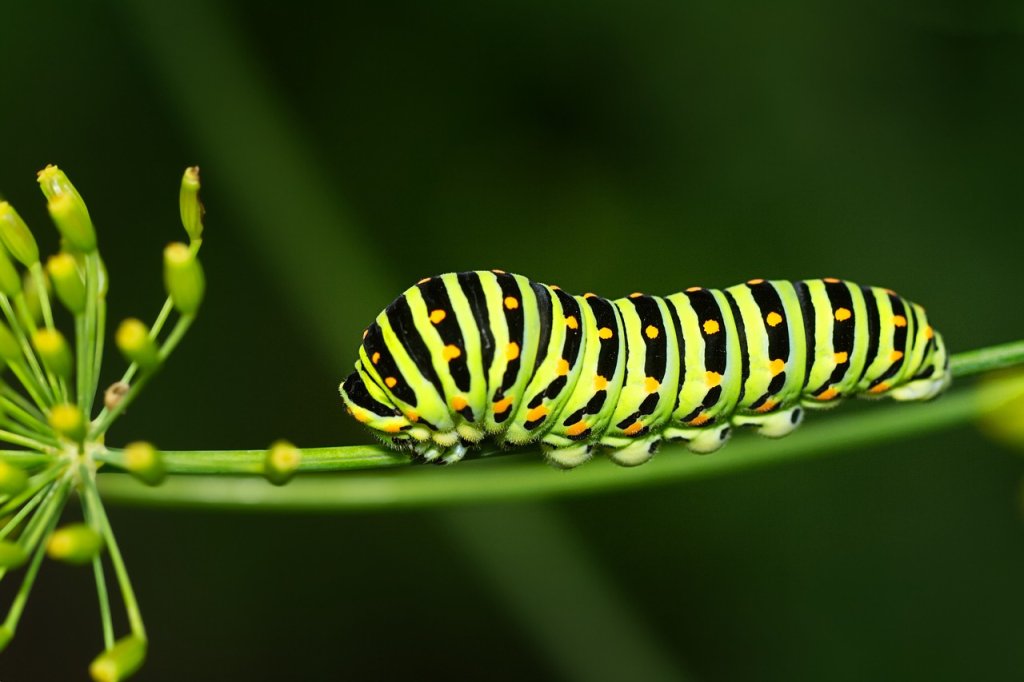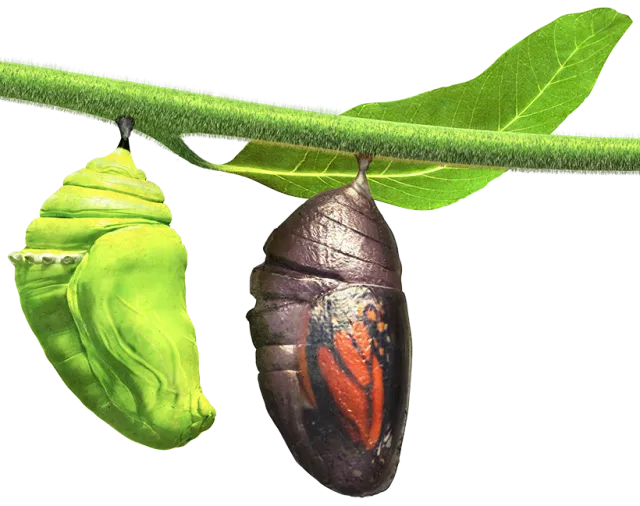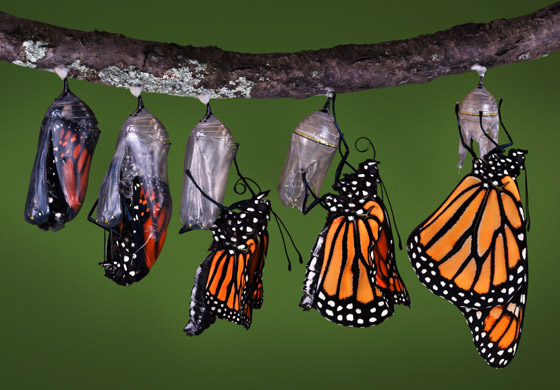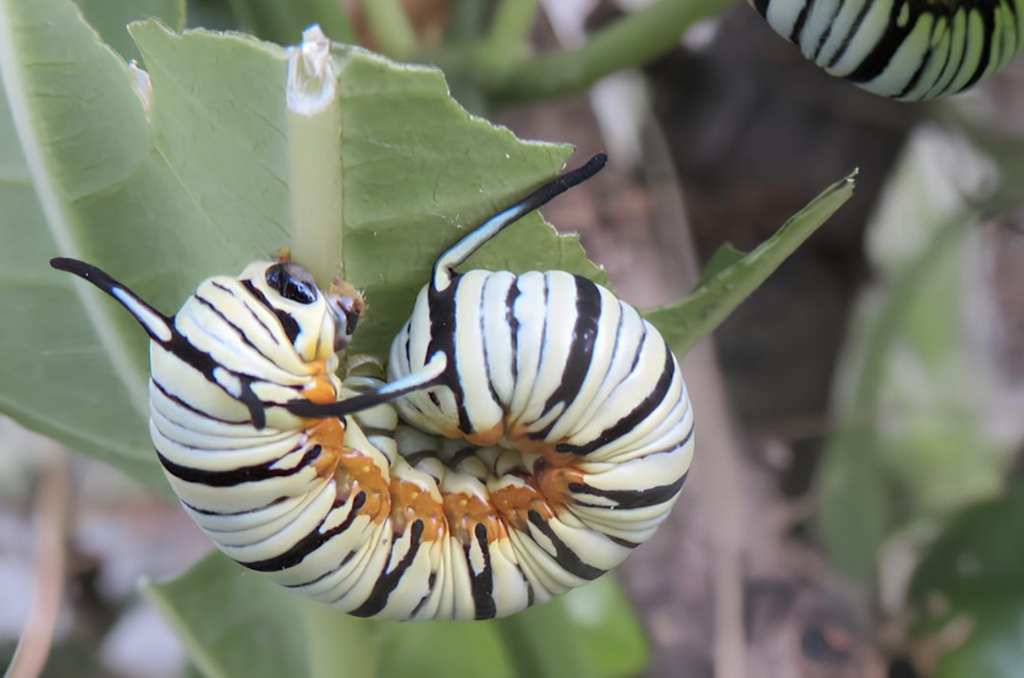Ever wondered, do all caterpillars turn into butterflies? Surprisingly, the answer is no, though many of us think caterpillars always turn into butterflies because of their wide popularity and general belief. However, the reality is not all caterpillars follow the same transformation path.
What a particular caterpillar will turn into depends upon the species and, most significantly, the process they undergo.
Not to mention, if it’s not a butterfly, it’s a moth. This may have piqued your interest in how to know what a particular caterpillar will turn into.
Read on; we have listed everything that will clear everything.
Which Caterpillars Don’t Change to Butterflies?

No, not all caterpillars turn into butterflies. Some butterflies undergo a different metamorphosis (the development process of an organism), transforming into moths. So, what caterpillars don’t become butterflies? Is it a yellow caterpillar, green or white caterpillar?
Well, there are many species and exceptions to the metamorphosis process, making a caterpillar into a butterfly. If your caterpillar turned into a moth and not a butterfly, it was a moth caterpillar.
Also, sometimes insects like wasps lay eggs inside caterpillars, which makes them parasitized; in this case, a parasitic insect is the outcome. That’s all cool and understandable, but how do you know what a particular caterpillar will convert into? Let’s explore.
How Do You Know if a Caterpillar Will Change to a Butterfly or a Moth?

Knowing what a particular caterpillar will turn into involves understanding many factors. This includes everything from physical characteristics and behavior to basic knowledge of different species.
Here are the factors that will help you with this.
Physical Features
- Hair Abundance: Butterfly caterpillars possess less hair and are smoother than moth caterpillars. Further, moth caterpillars are hairier and denser and have spines along their bodies.
- Color and Markings: Moth caterpillars are mostly found with different colors and pose a pattern that differs from butterfly caterpillars. For example, some moth caterpillars may be brightly colored and have markings, while others are mid-colored and have a pattern.
- Horn: Not all but many moth caterpillars have horn-like structures on their rear ends, which aren’t common to general caterpillars.
- Shape and Size: FIrstly, this may vary in both; however, generally, moth caterpillars are cylindrical, while butterfly caterpillars are elongated.
- Eating Habits: On careful observation, it has been found that butterfly caterpillars tend to specific plants, while moth caterpillars feed on a wide range of plants.
- Pupation: Not always, but often, pupae formation can work in distinguishing. Butterfly caterpillars form chrysalides on leaves or branches, while moth caterpillars are frequently associated with cocoons or ground burrowing.
How Does a Caterpillar Change Into a Butterfly?

Transforming a caterpillar into a butterfly is called metamorphosis, which includes four stages. Here is an overview of the same:
- Egg Stage: The process begins when a female butterfly lays egg on a host plant. After a certain period, generally a few days to a few weeks, the egg hatches, resulting in a caterpillar.
- Caterpillar Stage: The caterpillar starts feeding on leaves, growing rapidly. During this phase, it sheds its exoskeleton, which backs up its increasing size. Further, it stores energy and nutrients while feeding for the upcoming transformation.
- Pupa Stage: After the larva has reached a specific size, it attaches itself to a twig or a leaf, forming a protective case called chrysalis. Inside this layer, a significant transformation occurs.
- Adult Stage: The transformation completes after a certain period, depending on certain species and surrounding conditions. This happened when a chrysalis split and opened up, revealing an adult butterfly.
Conclusion
All in all, not all caterpillars change into butterflies but transform into moths. Sometimes, the species’ genetic makeup or species-specific characteristics transform a caterpillar into a moth. Not to mention that a butterfly caterpillar always changes to a butterfly, and a moth caterpillar always transforms into a moth.
In a few cases, it’s a parasitic insect if an insect like a wasp lays eggs inside a caterpillar. Share in the comment whether the article was helpful and met your needs.
Have you ever seen a caterpillar transforming into a butterfly? Comment below.
Frequently Asked Question
Do All Caterpillars Change Into Butterflies?
No, not all caterpillars transform into butterflies. Some caterpillars change to moths. What a particular caterpillar will change depends upon certain factors. This includes the species the caterpillar belongs to and the genetic makeup (those parasitized by wasps or other insects).
In How Much Time Does a Caterpillar Become a Butterfly?
A caterpillar’s time to become a fully developed adult butterfly isn’t always the same. It varies with species, surrounding conditions, and, most significantly, the temperature. Generally, the period ranges from a few weeks to months. During this time, the caterpillar goes through four significant stages.
Does Caterpillar only Change to Butterflies and Moths?
No, but most of the caterpillars change into either butterflies or moths. If not both, they may result in a parasitic insect. This insect is the result of parasitization by other insects, which most commonly is a wasp or flies that lay eggs inside the caterpillar.
How Do You Know What a Caterpillar Will Turn Into?
Knowing what a caterpillar will turn into includes observation of many factors. This includes physical features, like hair abundance and colors, and behavior, like eating habits. However, these are often confusing; therefore, having basic knowledge of all species is necessary.

